Jeep wrangler paint protection
The impressive American SUV Jeep Wrangler is designed to win the hearts of many drivers. The vehicle is fearless and reliable, always ready to take its owner to any corner of the planet.
The exterior of the Jeep highlights its serious character, with modern style accents visible in every inch of the body. However, even the toughest vehicle eventually shows signs of wear and tear, altering its appearance over time.
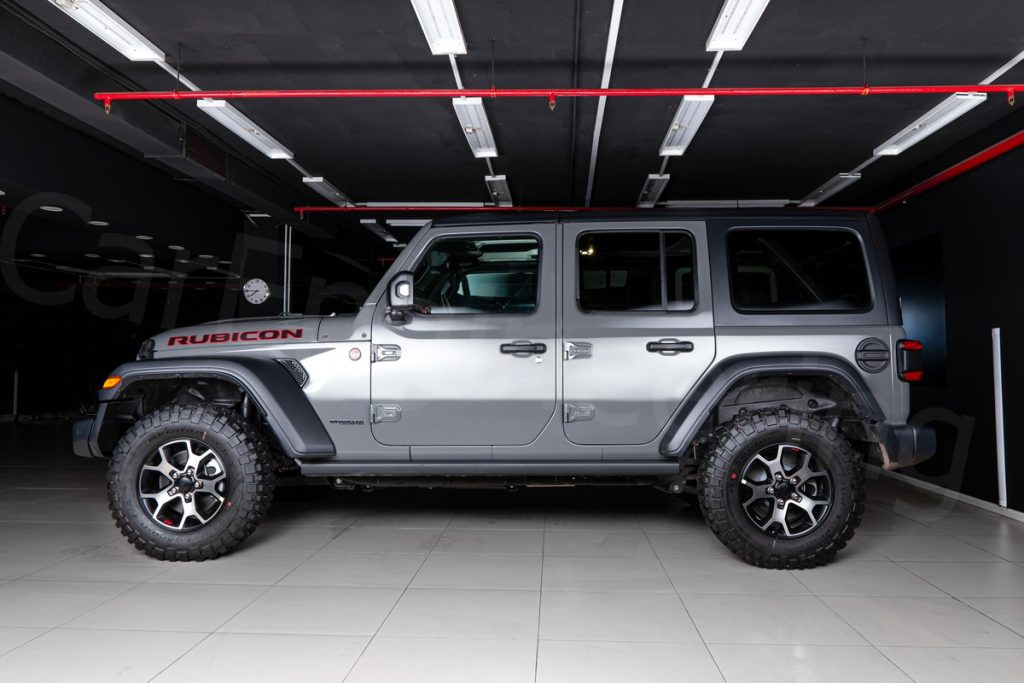
After the first few months of use, small scratches in the form of spiderwebs will inevitably appear on the body. The only way to protect the Wrangler is by applying an anti-gravel film. This protective coating acts as a barrier between the car’s paint and the surrounding environment, preventing unwanted damage.
In this review, we will discuss the importance of protecting a car’s body and explain why film is the most effective solution in this case. We’ll also provide a detailed account of how the Jeep Wrangler 2021 was wrapped at the CarEngineering studio.
How to reliably protect your car: options and their purposes
Keeping a car’s body in good condition requires effort. Without a protective coating, scratches and scuffs must be removed by regularly polishing the body. While effective, this method is not a long-term solution, as wear marks will inevitably reappear over time.
The only way to prevent damage is not to drive the car at all — a sad truth. Small stones and sand hit the body during every trip, and branches from trees and shrubs worsen the situation when driving through overgrown areas.
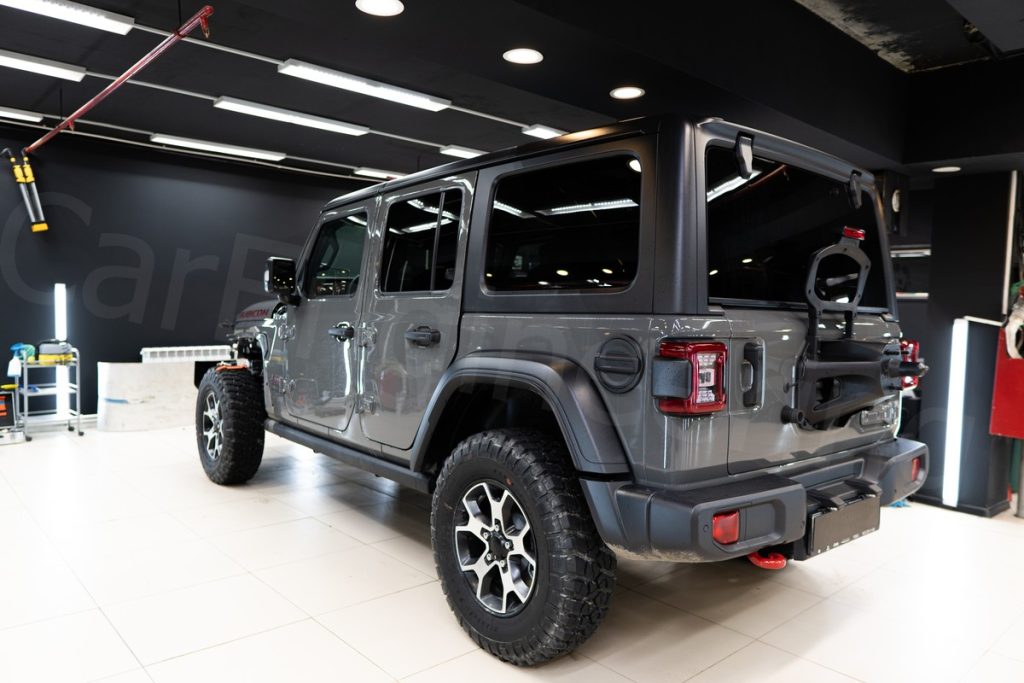
Scratches also appear after harsh washes — rough bristles can cause tiny spiderweb-like scratches, visible under sunlight. That’s why it’s important to consider protecting your Jeep’s body in advance, ensuring it remains in pristine condition for years.
There are three types of protective coatings on the market: ceramic, liquid glass, and anti-gravel film. Each has its own properties, features, and purposes.
For reliable and long-term protection, we recommend looking into film. This protective layer, with a thickness of 100-210 microns, can shield the body from many mechanical and chemical damages.
Ceramic and liquid glass act as lacquer sealers and are often applied after body polishing. Their main purpose is to protect against chemicals and UV rays. However, they scratch easily and don’t hold up against gravel and stones due to their thin layers. They lack the necessary properties to provide sufficient protection.
Another advantage of the film is its low maintenance. The film protects the Jeep’s body equally well in any weather or temperature conditions, maintaining its properties. There’s no need to regularly renew the film, only when its service life ends, which can be between 2 and 8 years, depending on the type. For everyday use, occasional washing will suffice, with no special care required.
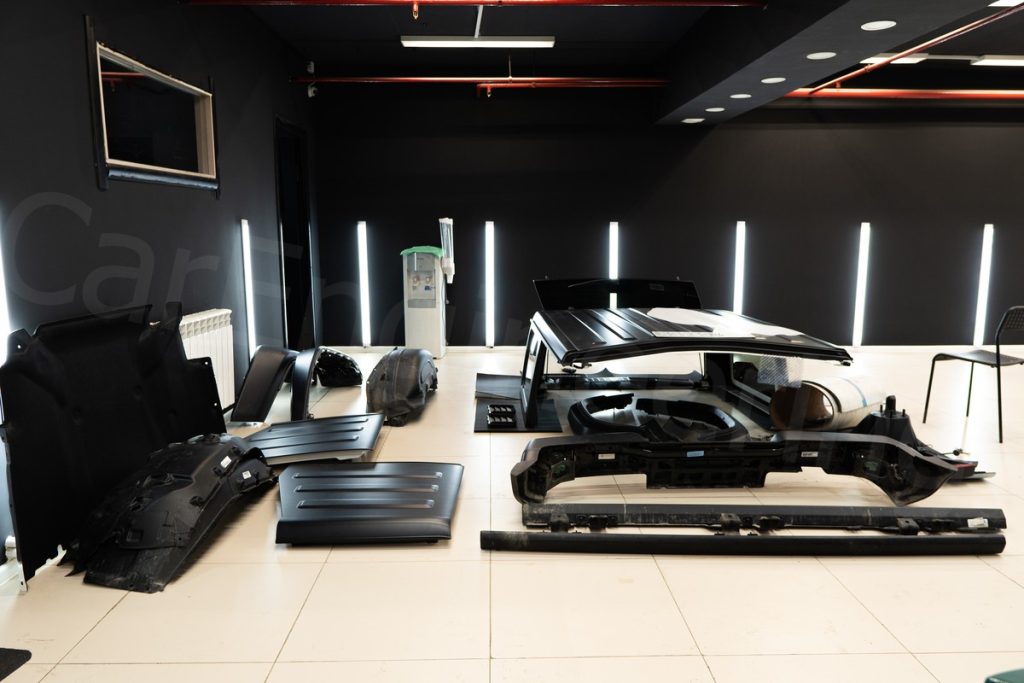
Ceramic and liquid glass coatings lose their properties over time and require reapplication. Within a year, you’ll need to repeat the process. Given their limited protection, constant investment is not cost-effective.
In conclusion, film is the most effective coating for car protection. The car owner contacted CarEngineering to preserve the car’s body and protect it from potential wear, which is why our specialists used anti-gravel film.
At our studio, you can choose from three types of film coatings. Our experts will consider your preferences and help you decide.
How we chose the film for the Jeep
CarEngineering offers vinyl, hybrid, and polyurethane films. The client chose polyurethane since the main goal was protection.
Polyurethane coating offers the best properties compared to other films. Its thickness is 150-210 microns, making it a reliable barrier for the paintwork.
Polyurethane can protect the body from:
- Tree branches and shrubs;
- Sand;
- Gravel and stones;
- Resin;
- Oils;
- Road chemicals and detergents;
- Bird droppings and insect marks;
- Hail, snow, and rain;
- Mold.

The film absorbs the impact, leaving the paintwork undamaged. Moreover, scratches will disappear under sunlight. Thanks to its elasticity, polyurethane is self-healing — when heated, the film returns to its original smooth and shiny appearance. This self-healing property is polyurethane’s key feature. The Jeep Wrangler in film will retain its attractive look throughout its lifetime.
Polyurethane withstands temperatures from −70°C to +100°C. In winter and summer, the coating protects the car equally well, unaffected by cold or heat.
Another reason to choose polyurethane film is its durability. After wrapping, the Jeep Wrangler will be protected for an average of 5-8 years. During this time, the film maintains its properties and doesn’t peel. Once removed, the body will look as good as new, shiny and flawless.
Hybrid film also offers body protection but falls slightly short of polyurethane in terms of performance. With a thickness of 140-190 microns, it can protect against branches, sand, bird droppings, insect marks, road chemicals, and detergents.
Since the film is thinner, it can withstand gravel and stones at low speeds. However, polyurethane’s greater thickness provides a clear advantage in reducing the risk of damage from stones.
Hybrid film shares polyurethane’s temperature resistance and self-healing ability. However, its lifespan is shorter — 2-4 years. It will need to be replaced sooner, making it more suitable for short-term protection rather than long-term use.
Wrapping the Jeep Wrangler in hybrid film is a good option if you’re trying this protection method for the first time. It will allow you to see how the film works in different situations and prove its reliability and effectiveness. After 2-4 years, you can upgrade to polyurethane for longer-term protection.
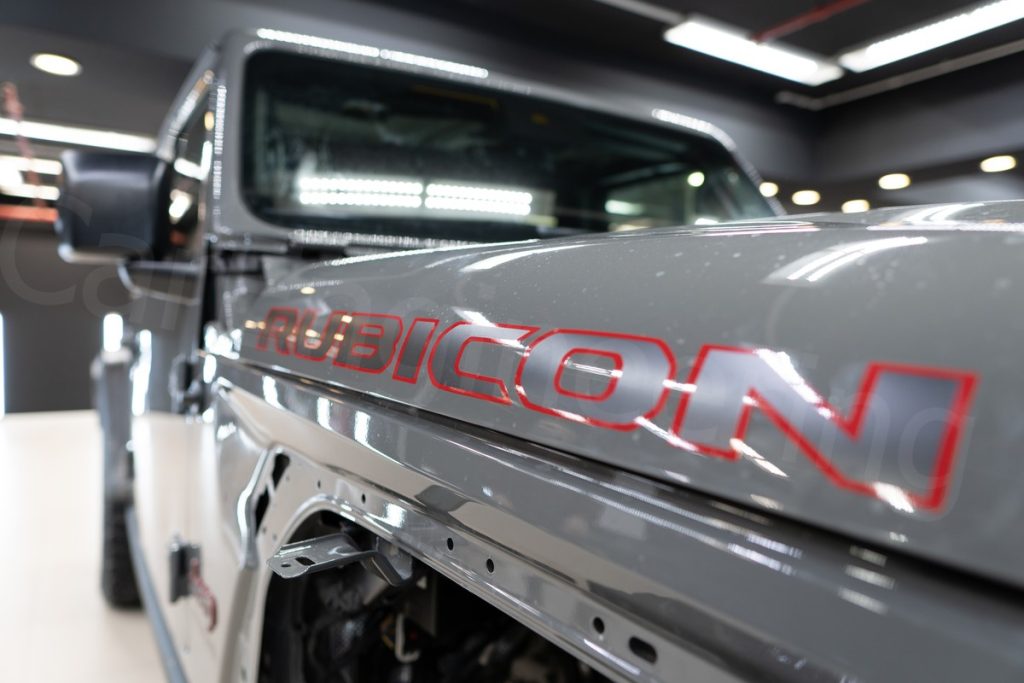
Vinyl film ranks third in effectiveness. It is primarily used for car tuning due to its wide range of textures and colors. In this regard, vinyl surpasses hybrid and polyurethane, offering unique customization options for altering the car’s appearance.
Vinyl film is 100-150 microns thick, enough to protect against branches, sand, light chemicals, bird droppings, and insect marks, but it’s ineffective against stones.
Vinyl doesn’t have self-healing properties. Scratches will remain, making it less suitable for protection.
Vinyl’s lifespan is 2-3 years. This is ideal for changing the car’s design, giving the driver the chance to frequently refresh the look and try new styles. Vinyl comes in many colors, making it hard to settle on just one option.
When choosing a coating, consider your preferences. Think about whether you want to change the appearance or provide robust protection for the Jeep. For those who want an invisible coating, we offer transparent polyurethane. No one will notice the film, but you’ll be confident your car is protected from damage.
If you’re unsure which coating to choose, our experts will help you find the best option based on your preferences.
Full wrapping Jeep Wrangler PPF film
Full wrapping provides comprehensive protection. Two reasons to opt for full wrapping:
- It eliminates the risk of damage to any unprotected parts;
- After removal, the body will still look shiny, and all parts will remain in perfect condition.
The Jeep owner opted for full wrapping.
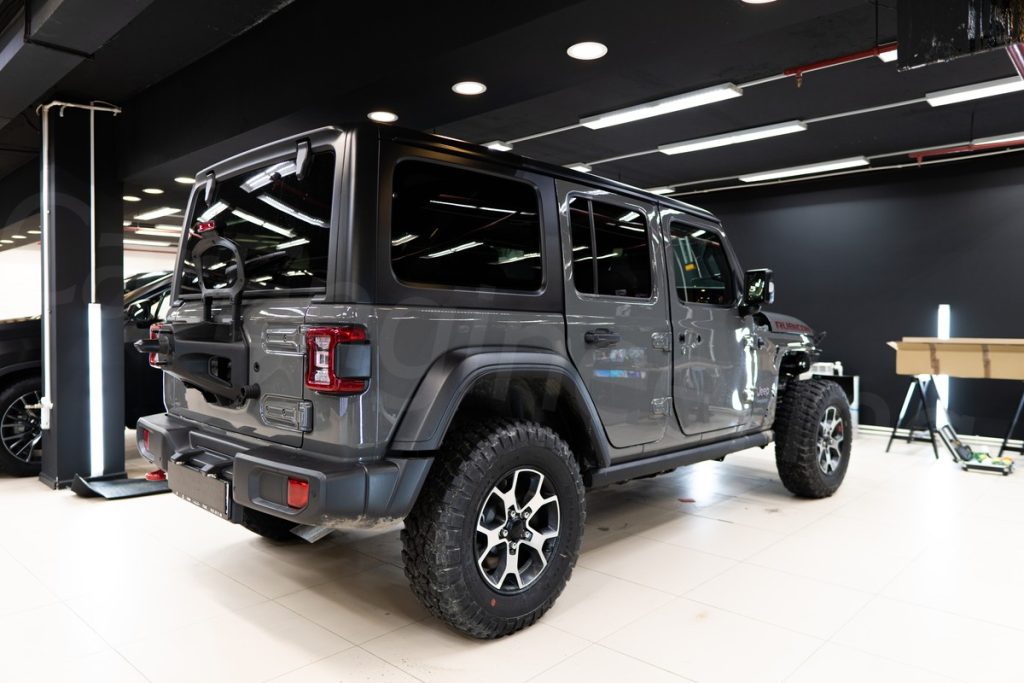
The car is first prepared for wrapping, including disassembly and washing. Disassembly involves removing bumpers, door handles, and moldings for a higher-quality wrap. The vehicle is then thoroughly cleaned, removing dirt, wax, and other residues.
Once prepared, the film is applied using the wet method, ensuring better coverage. The film is carefully smoothed, and air bubbles are removed, creating an invisible effect.
Our technicians use advanced wrapping techniques, including edge wrapping. The film is cut with extra material and tucked under the parts for added durability.
During the car wash, the vehicle undergoes a thorough cleaning in several stages. Dirt, grease, wax, and limescale are removed from both the interior and exterior parts. The body is inspected for chips and corrosion. Visible defects are repaired before applying the film to the 2022 Jeep Wrangler, which helps improve the quality of the result.
Once the vehicle is prepared, the material is cut to fit the parts. Initially, a large piece of film is applied to the body, then the technician trims the necessary amount of material for each part.
Next, the Jeep undergoes stone chip protection. The film is applied to the body using the wet method, which helps distribute the coating more evenly. The technician then smooths the film over the parts, going over them multiple times. Excess fluid and air bubbles are removed from under the film. This results in an invisible film effect, as the coating adheres perfectly to the body.
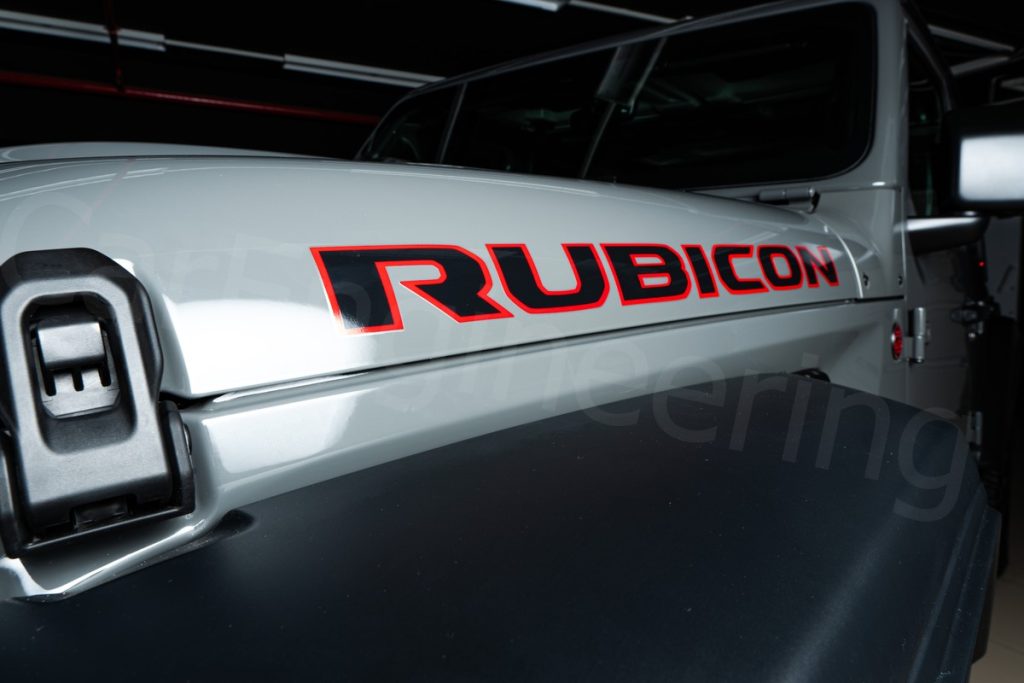
CarEngineering professionals apply the film using the latest technologies. A distinctive feature of our wrapping is the “folding” technique. The film is cut with a margin and after being smoothed on the body, it is folded under the part. This process takes 1-2 mm of film, but it’s enough to make the protection much more reliable. Now, a flying stone won’t be able to scratch or tear the film, as its edge is tucked under the part.
After wrapping the Jeep Wrangler, the protective film needs to dry until the next day. During this time, the wet corners dry completely, and the film securely adheres to the body. Before handing over the vehicle, the technician inspects the work, checking every detail with particular attention to corners and seams.
This is not the end of our service. We strive to go the extra mile and meet all the client’s wishes. At CarEngineering, we offer a follow-up inspection of the Wrangler a week after the film application. As part of our post-service care, we will wash and inspect your vehicle for free to ensure the quality of our work.
If you’ve been thinking about protecting your car with a film but haven’t made the decision yet, visit CarEngineering. We guarantee a personalized approach to every car, competitive prices, and professional service. Plus, we have delicious coffee and a waiting area with a view of the workshop!
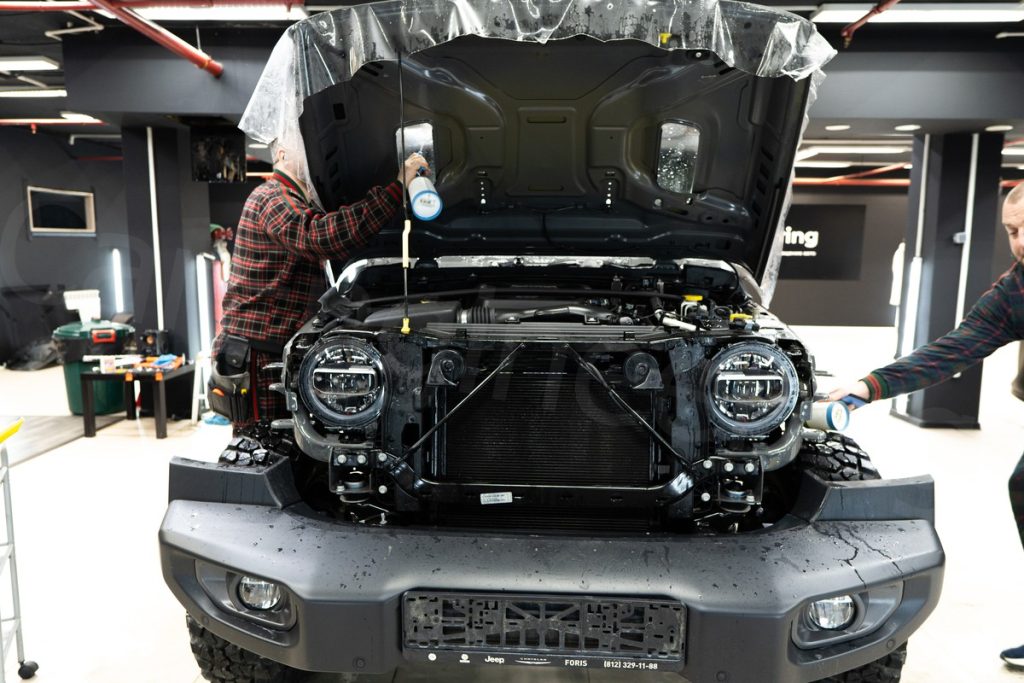
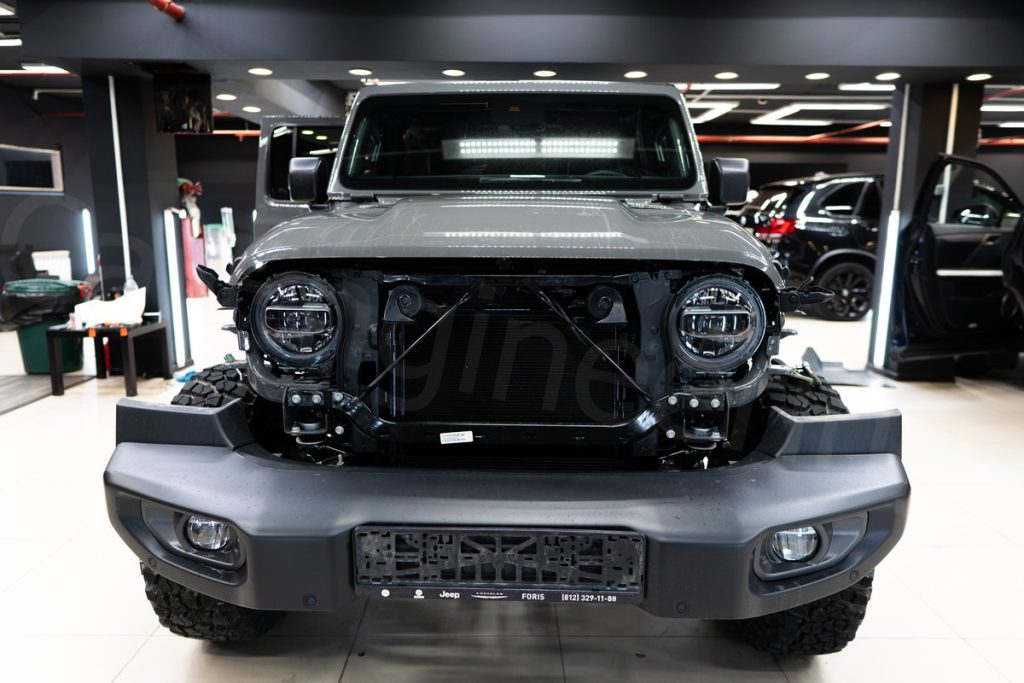
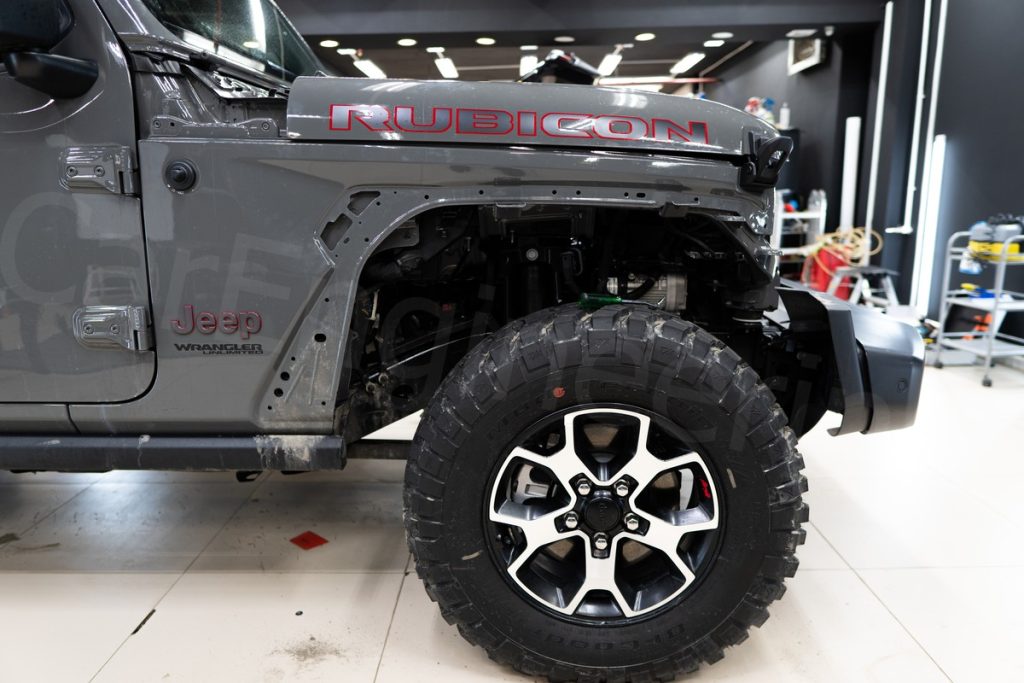

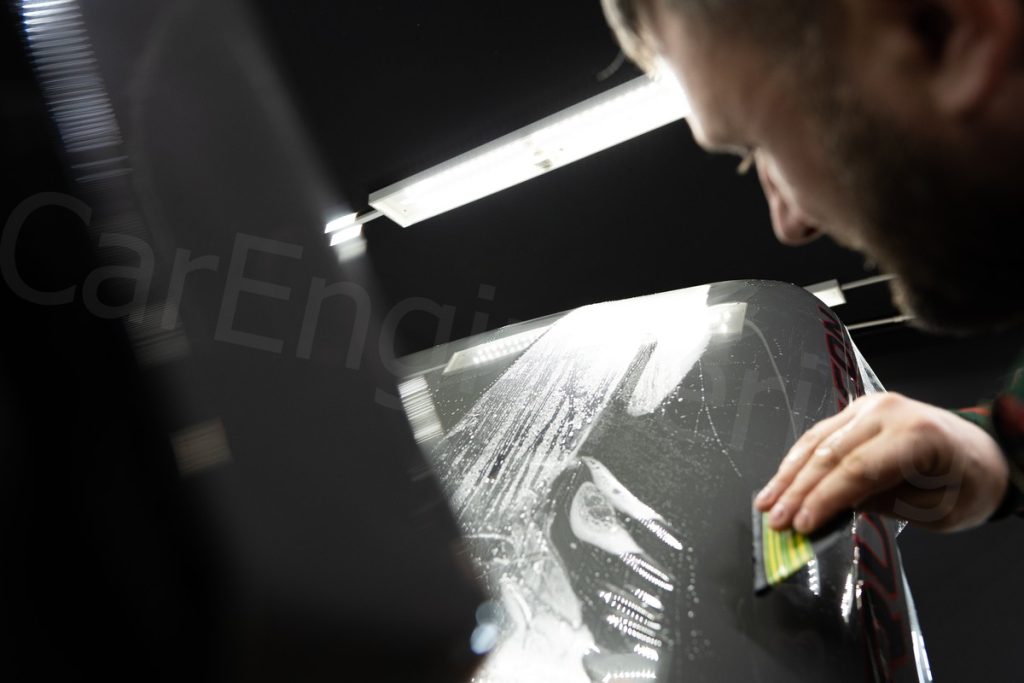
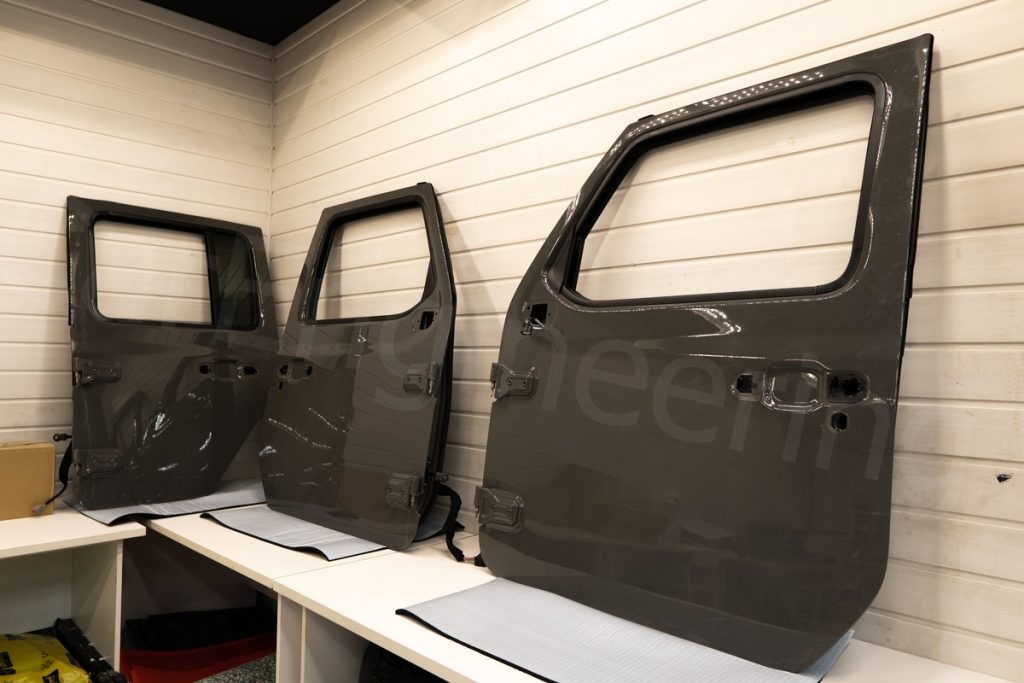

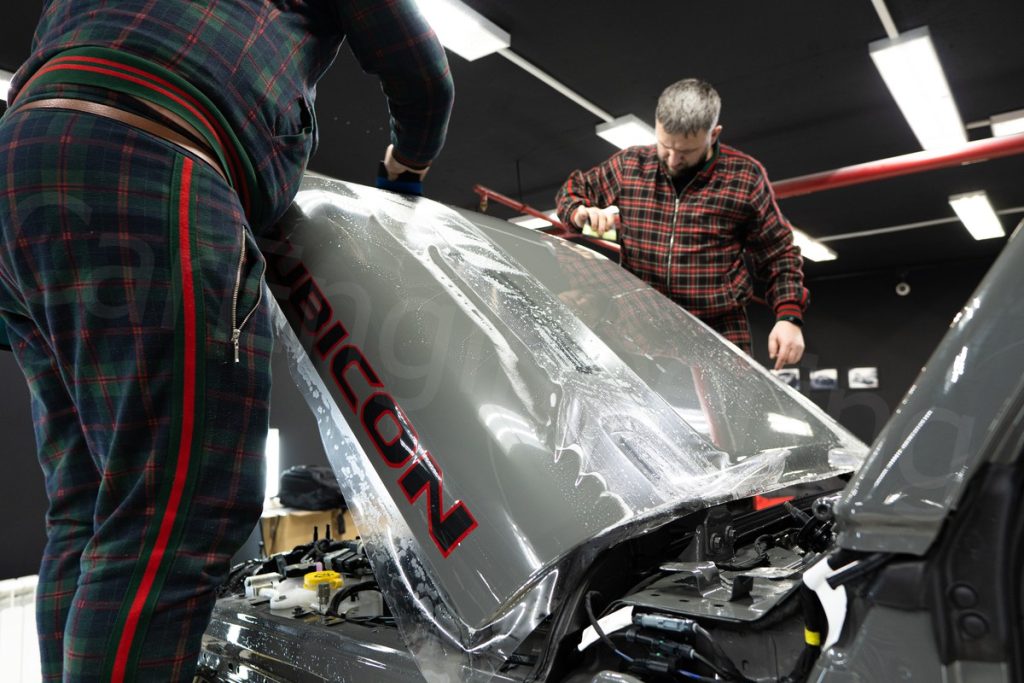
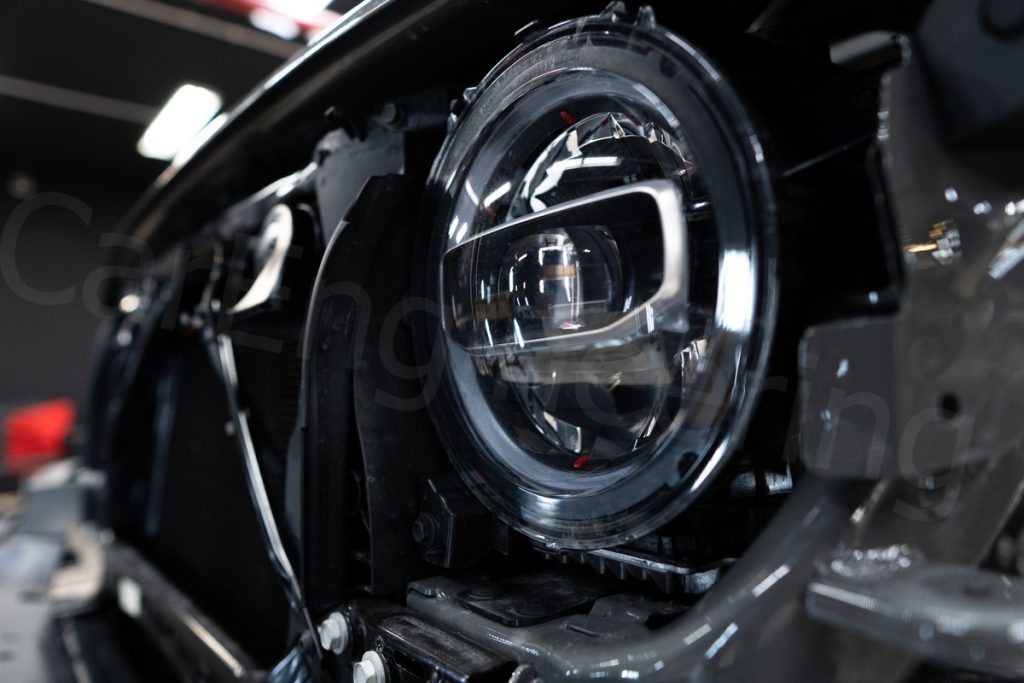
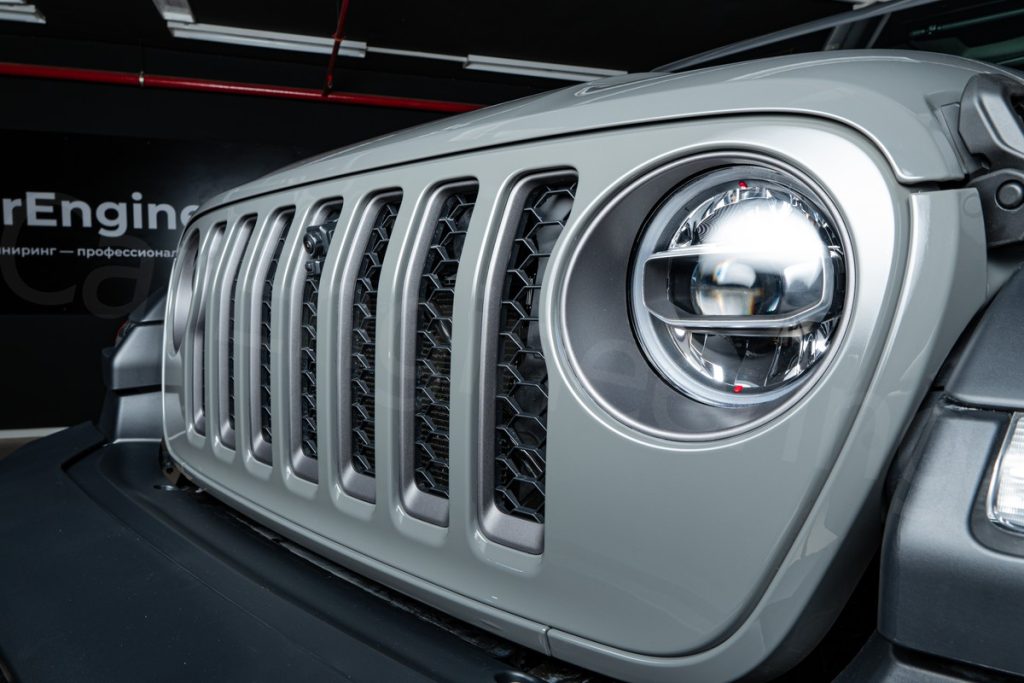
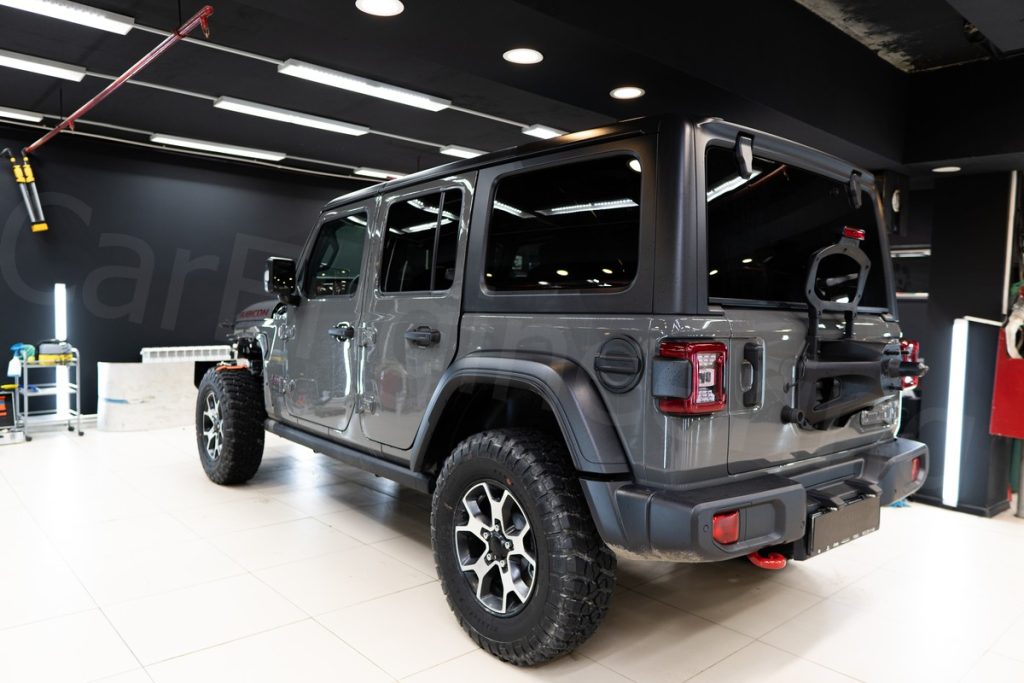
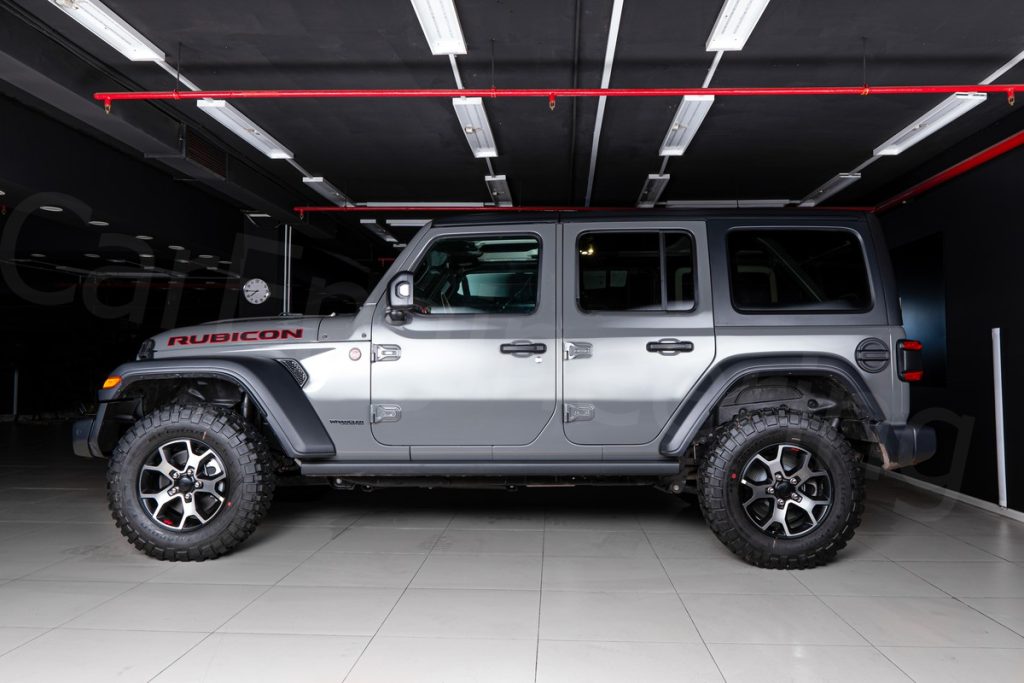
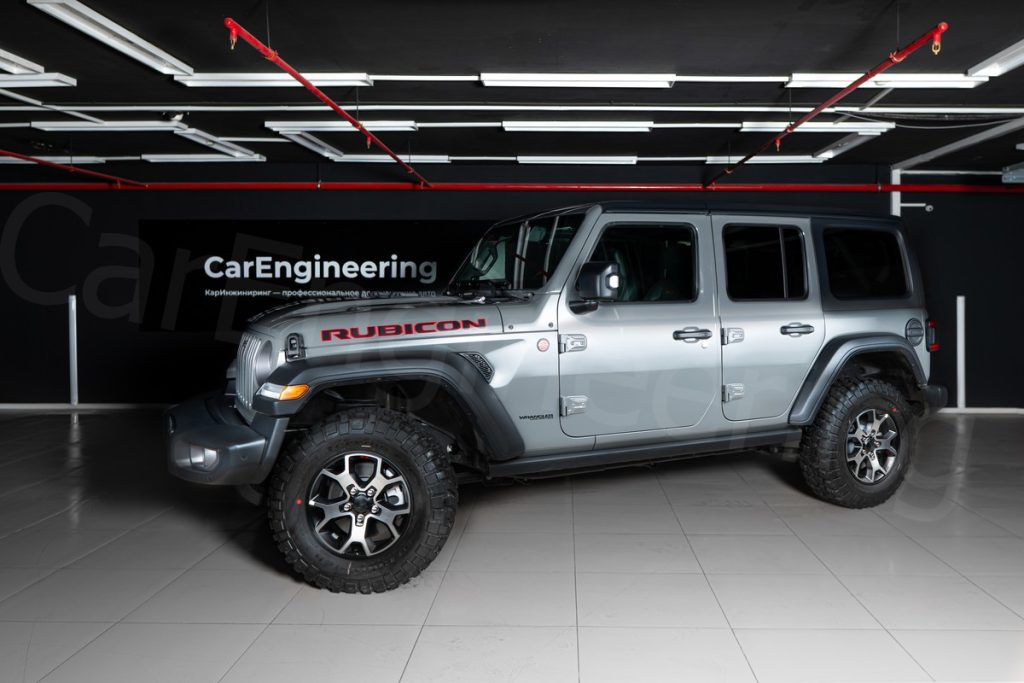


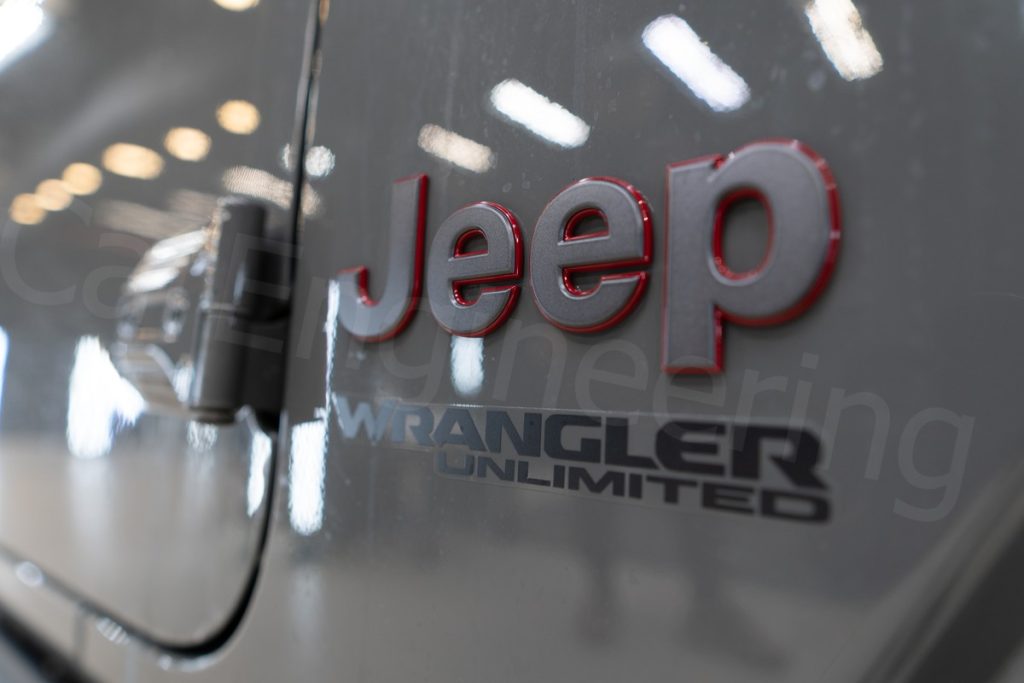
We will be glad to work with your car. Please contact us
☎️ 056 666 5810
📞 Whatsapp +971 56 666 58 10
We are located in Dubai – link – Al Quoz 2

